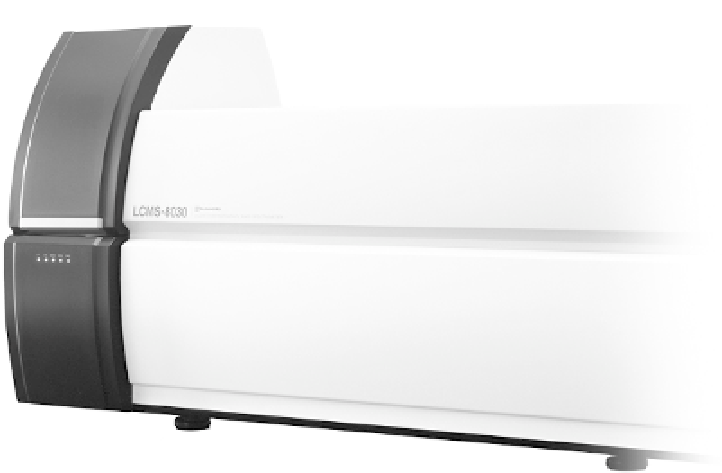Environmental Engineering Reference
In-Depth Information
Figure 1.13
LC/MS instrument (copyright of Shimadzu Corporation)
Once compounds elute from the column, they can be identifi ed using a variety of detectors which
are most commonly based on the mass of the compound (mass spectrometry, or MS), or the wave-
length at which the compound absorbs (or re-emits, in the case of fl uorescence spectroscopy) light-
normally within the UV/visible range, i.e., UV/visible spectrometry. Generally, detection methods
which are based on UV/visible spectrometry do not achieve the same sensitivity as those based on
mass detection. As such, MS-based instruments, especially tandem instruments such as MS/MS
using MRM transitions (as described below), are increasingly becoming the benchmark against
which other techniques are measured.
LC-MS/MS (tandem mass spectral techniques) uses chromatography to do the compound separa-
tion, then a specifi c ion is selected, then that ion is broken apart, or, further fragmented). This cre-
ates a compound-specifi c characteristic set of 'jigsaw' pieces. The procedure is known as multiple
reaction monitoring (MRM). The products of this procedure can be seen even in a very complicated
matrix. If, for example, there were tens of thousands of compounds in a sample, the presence of a
particular compound could usually be discerned quite easily. Figuratively, it makes fi nding a needle
in a haystack trivial. This is the type of analysis that is conducted to spot the use of illegal, perfor-
mance-enhancing drugs in athletes during the Olympic Games.
1.5.1.1 Principles of high performance liquid chromatography
HPLC (with UV/visible detector) uses both a mobile and a stationary phase to separate compounds
of interest in a complex solution (or mixture). A sample in a solvent, which also ideally serves as
the mobile phase, is forced/washed through a column on which the stationary phase is mounted at
relatively high pressure (Harris 2007). Analytes, or compounds, with a higher affi nity for the mobile
phase, i.e., which do not bind strongly to the stationary phase, migrate more rapidly through the col-
umn (Harris 2007). Compounds are then identifi ed on the basis of the characteristic retention time
after which they emerge, and importantly, their characteristic profi le as determined by the selected
HPLC detector.
Aside from 'sample cleanup', an essential step conducted to remove unwanted particles and
compounds which would interfere with the detection of carbofuran, samples analysed using this




























Search WWH ::

Custom Search